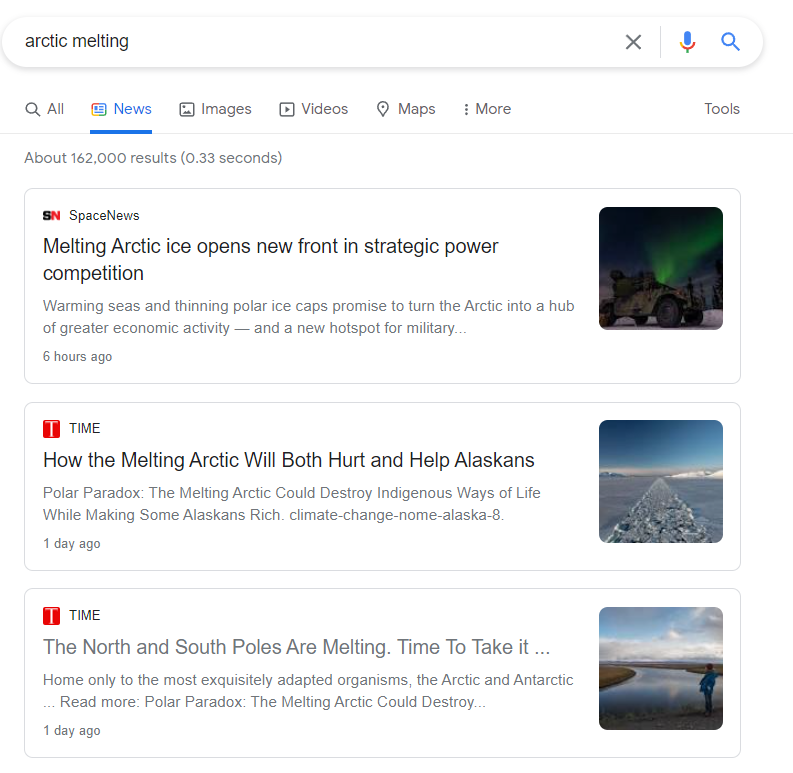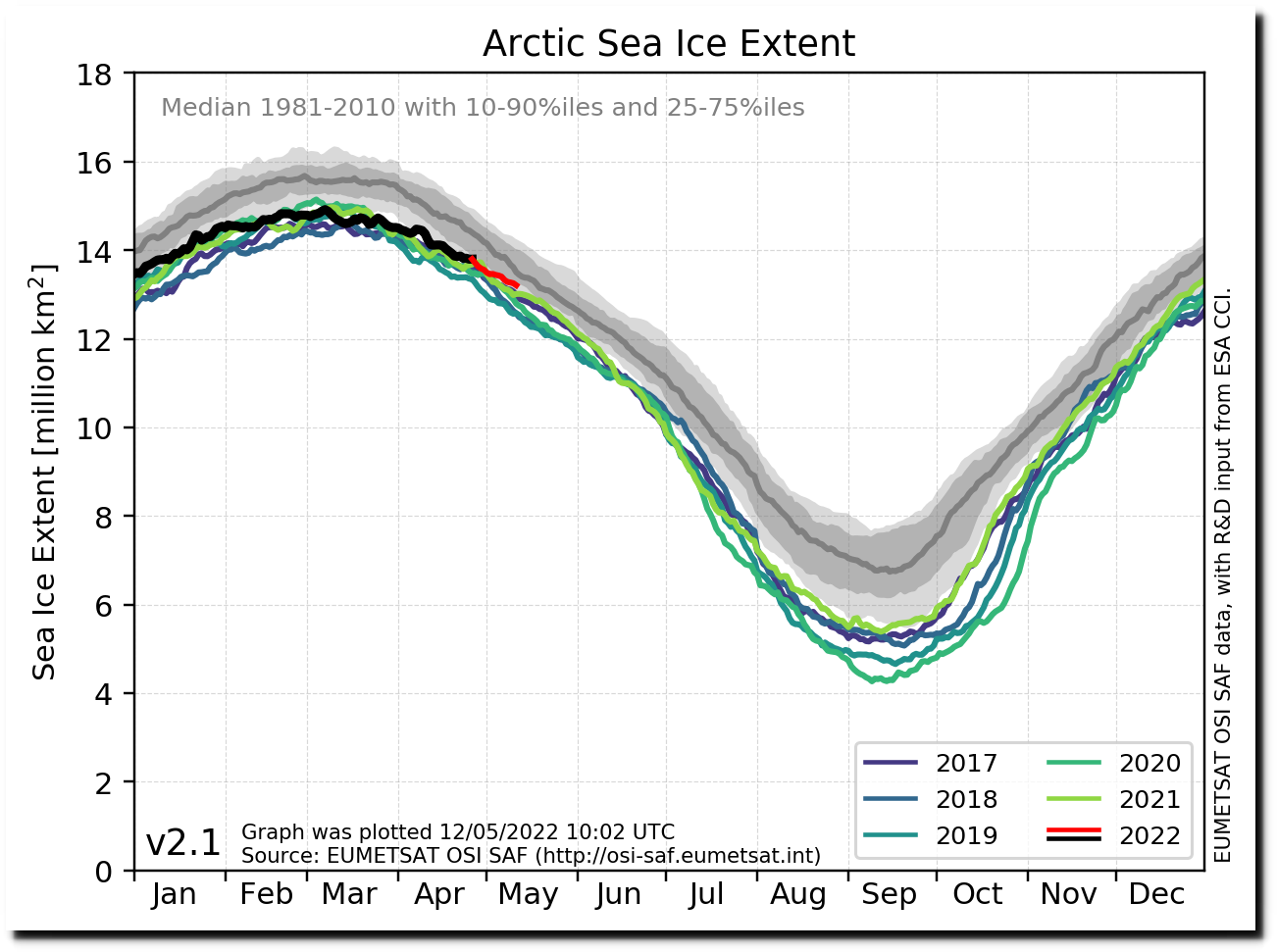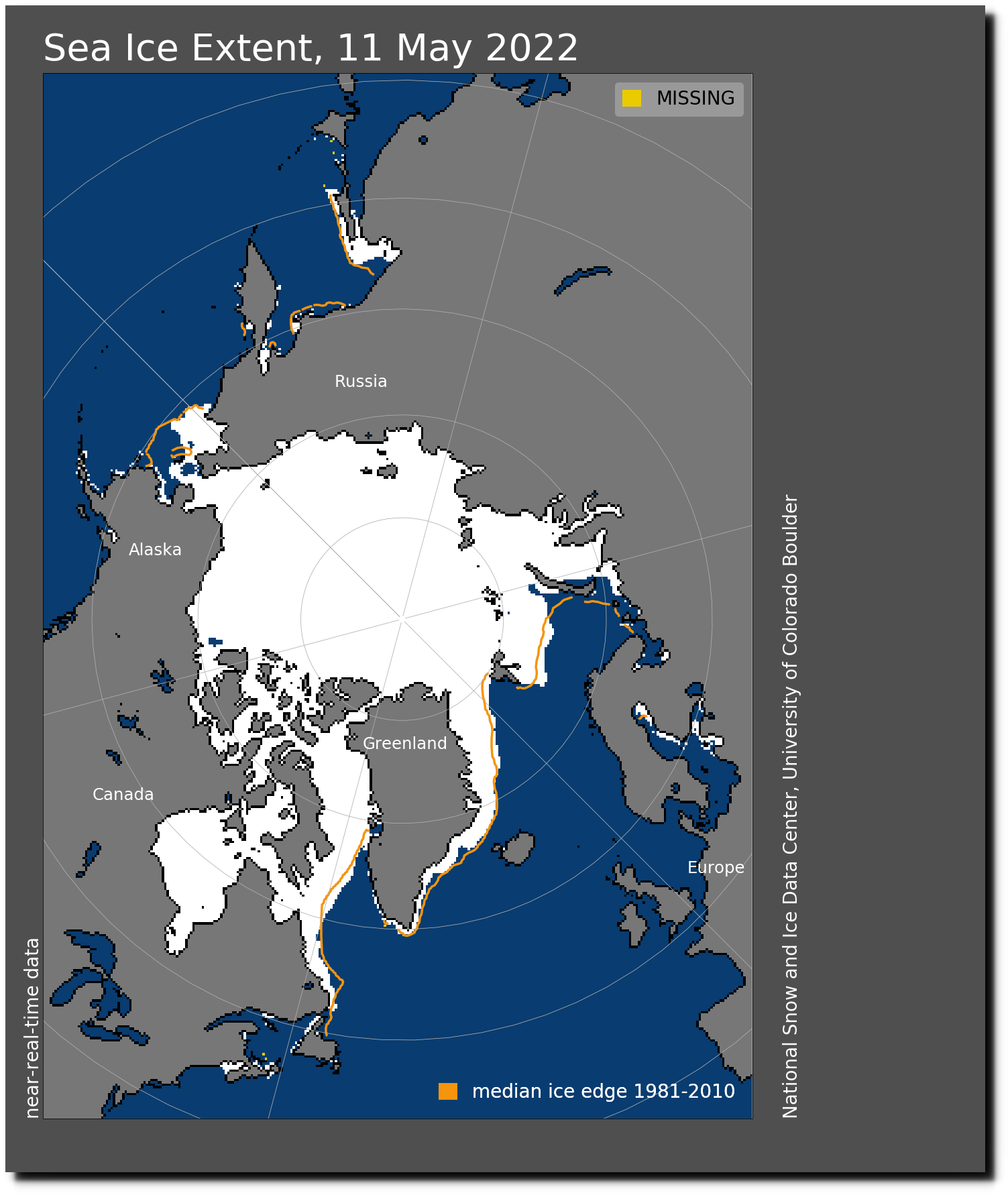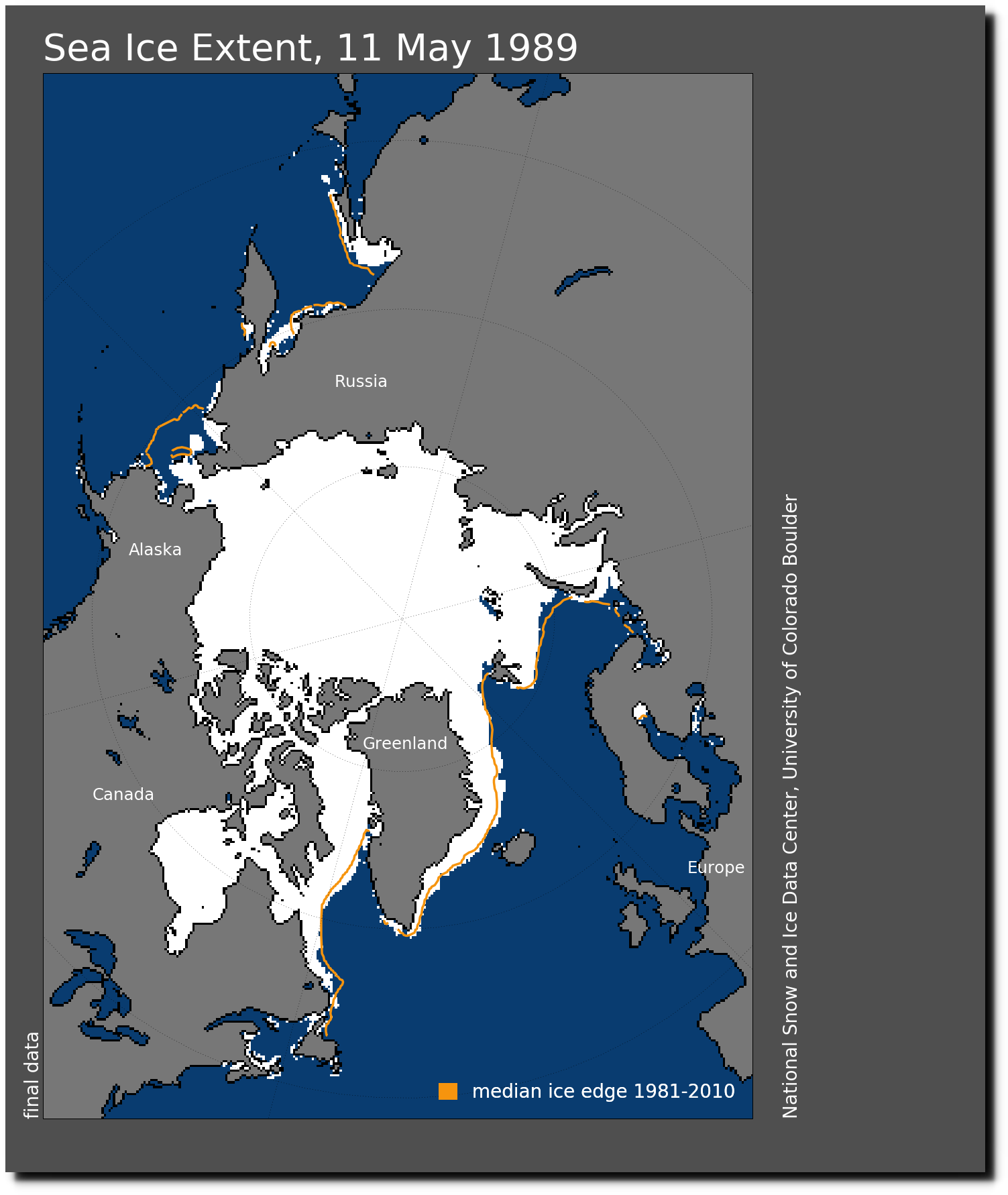A Google news search for Arctic melting turns up 162,000 results.
Arctic sea ice extent is just below the 1981-2010 median, higher than 1989 and about the same as 1996.
Ocean and Ice Services | Danmarks Meteorologiske Institut
N_20220511_extn_hires_v3.0.png






